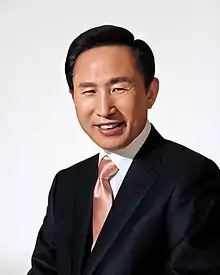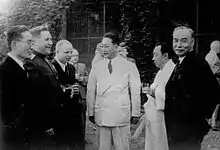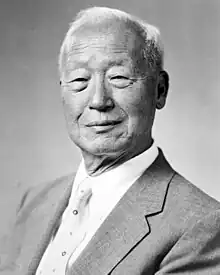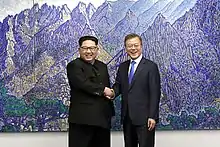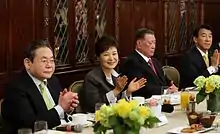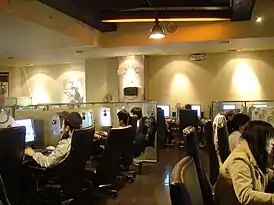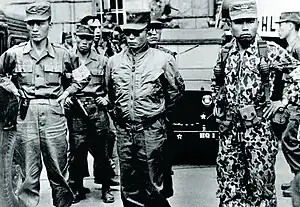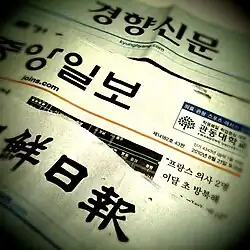환영합니다! / Welcome To The South Korea Portal!South Korea, officially the Republic of Korea (ROK), is a country in East Asia. It constitutes the southern part of the Korean Peninsula and borders North Korea along the Korean Demilitarized Zone. The country's western border is formed by the Yellow Sea, while its eastern border is defined by the Sea of Japan. South Korea claims to be the sole legitimate government of the entire peninsula and adjacent islands. It has a population of 51.96 million, of which roughly half live in the Seoul Capital Area, the fourth most populous metropolitan area in the world. Other major cities include Incheon, Busan, and Daegu. The Korean Peninsula was inhabited as early as the Lower Paleolithic period. Its first kingdom was noted in Chinese records in the early 7th century BCE. Following the unification of the Three Kingdoms of Korea into Silla and Balhae in the late 7th century, Korea was ruled by the Goryeo dynasty (918–1392) and the Joseon dynasty (1392–1897). The succeeding Korean Empire (1897–1910) was annexed in 1910 into the Empire of Japan. Japanese rule ended following Japan's surrender in World War II, after which Korea was divided into two zones: a northern zone occupied by the Soviet Union, and a southern zone occupied by the United States. After negotiations on reunification failed, the southern zone became the Republic of Korea in August 1948, while the northern zone became the communist Democratic People's Republic of Korea the following month. In 1950, a North Korean invasion began the Korean War, which ended in 1953 after extensive fighting involving the American-led United Nations Command and the People's Volunteer Army from China with Soviet assistance. The war left 3 million Koreans dead and the economy in ruins. The authoritarian First Republic of Korea led by Syngman Rhee was overthrown in the April Revolution of 1960. However, the Second Republic was incompetent as it could not control the revolutionary fervor. The May 16 coup of 1961 led by Park Chung Hee put an end to the Second Republic, signaling the start of the Third Republic in 1963. South Korea's devastated economy began to soar under Park's leadership, recording the fastest rise in average GDP per capita. Despite lacking natural resources, the nation rapidly developed to become one of the Four Asian Tigers based on international trade and economic globalization, integrating itself within the world economy with export-oriented industrialization. The Fourth Republic was established after the October Restoration of 1972, in which Park wielded absolute power. The Yushin Constitution declared that the president could suspend basic human rights and appoint a third of the parliament. Suppression of the opposition and human rights abuse by the government became more severe in this period. Even after Park's assassination in 1979, the authoritarian rule continued in the Fifth Republic led by Chun Doo-hwan, which violently seized power by two coups and brutally suppressing the Gwangju Uprising. The June Democratic Struggle of 1987 ended authoritarian rule, forming the current Sixth Republic. The country is now considered among the most advanced democracies in Continental and East Asia. (Full article...) Selected article - The Korean War was fought between North Korea and South Korea from 1950 to 1953. The war began on 25 June 1950 when North Korea invaded South Korea. The war ceased with an armistice on 27 July 1953. North Korea was supported by China and the Soviet Union while South Korea was supported by the United States and the United Nations (UN). In 1910, the Empire of Japan annexed Korea as a colony for 35 years until its surrender at the end of World War II on 15 August 1945. The United States and the Soviet Union liberated and then divided Korea along the 38th parallel into two zones of occupation. The Soviets administered the northern zone, and the Americans administered the southern zone. In 1948, as a result of Cold War tensions, the occupation zones became two sovereign states. A communist state, the Democratic People's Republic of Korea, was established in the north under the government led by Premier Kim Il Sung, while a capitalist state, the Republic of Korea, was established in the south under the government led by President Syngman Rhee. Both governments claimed to be the sole legitimate government of all of Korea and neither accepted the border as permanent. The years prior to North Korea's invasion of South Korea were marked by border clashes between the two countries and an insurgency in the South that was backed by the North. After failed attempts to unify the Koreas, North Korean forces (Korean People's Army or KPA) crossed the 38th parallel on 25 June 1950 into South Korea. The United Nations Security Council denounced North Korea's actions and authorized the formation of the United Nations Command and the dispatch of forces to South Korea to repel the invasion. The Soviet Union was boycotting the UN for recognizing Taiwan (Republic of China) as China, and the People's Republic of China was not recognized by the UN, so neither could support their ally North Korea at the Security Council meeting. Twenty-one countries of the United Nations eventually contributed to the UN force, with the United States providing around 90% of the military personnel. (Full article...)Selected image The Gold crown from Seobongchong Tumulus The Gold crown from Seobongchong Tumulus (Korean: 서봉총 금관; Hanja: 瑞鳳塚金冠; RR: Seobongchong geumgwan; MR: Sŏbongch'ong kŭmgwan), National Treasure of South Korea No. 339, is a gold crown of Silla origin that is now housed at the Gyeongju National Museum. More did you know -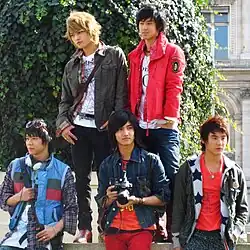 TVXQ in Paris
In the news
|
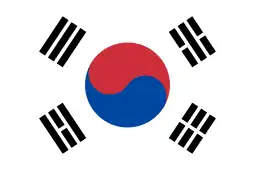
.jpg.webp)

